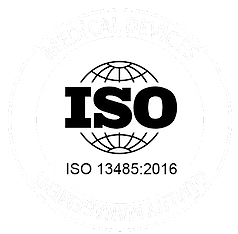
Developing a software-enabled medical device isn’t just a technical challenge—it’s a strategic one.
Startups and growth-stage companies often enter the space with a compelling idea, only to find themselves buried in documentation, bogged down by power constraints, or tripped up by regulatory surprises.
But it doesn’t have to be that way.
In a recent expert panel on medical device development and FDA clearance, five standout strategies were shared—hard-earned insights that can help development teams stay focused, move faster, and avoid costly missteps.
Whether you’re building an implantable device, a connected wearable, or software as a medical device (SaMD), these takeaways offer a smarter path forward.
1. You don’t need to start with a mountain of documentation—you need to prove it works
“Contrary to formal teaching, it does not always make sense to follow the full formal medical product development process right away.”
Formal design controls are and documentation important—but they’re not always the right starting point. In the early days, your priority should be proving the product works and that there’s a real market need.
In the early stages, the most urgent goal is demonstrating technical feasibility and functional value. Why? Because that’s often the key unlocks your next round of funding.
Investors don’t fund documentation. They fund momentum—proof that your product solves a real problem and can be built in the real world.
Rather than sinking time and money into detailed specifications before anything is validated, consider a lighter-weight approach:
- Capture user needs, key hazards, and product requirements informally
- Build quick prototypes
- Test the concept
- Validate key assumptions
Yes, you will absolutely need to formalize design inputs, traceability, and risk management at some point. But leading with lean, fast-moving development gives you the traction you need to secure additional funding—and then scale your compliance process with additional time and resources.
2. Version one should not be feature-complete
“Everybody tries to put the kitchen sink in their product… You’ll run out of money before you get what really matters to the market.”
Feature creep is one of the most common—and most dangerous—startup traps. Founders often feel pressure to chase every competitor feature or customer wishlist item—but in medical device development, that’s a slippery slope toward a prolonged timeline and an overblown budget.
The better approach is to ruthlessly prioritize what makes your product unique and defer everything else to later releases.
Put simply: don’t overbuild. Design a clean, lean version one that solves a real clinical or user problem—then build from there.
Fewer features mean:
- Simpler testing
- Easier documentation
- Faster time to market
- Less risk during FDA review
Focus is not just a design principle—it’s a survival strategy. Solve one problem exceptionally well.
3. Keep the smart stuff away from the patient
“The closer a device is to a patient, the harder it is to get approved and the harder it is to update later.”
In today’s connected ecosystems, devices often include multiple layers: implants or wearables, mobile apps, and cloud platforms. Where you place functionality across this stack matters.
Implantables and wearables should focus on stability, data capture, and safety—collecting data and delivering therapy as needed, but doing minimal “thinking.” The device connected to the patient should perform only the tasks that it is uniquely qualified to perform.
Unless they’re strictly required to enable the patient device to do its job, sophisticated logic, analytics, and adaptive algorithms should live in the app or cloud—where updates and regulatory approvals are faster and easier.
Why it matters:
- Firmware updates to implantables are difficult and potentially high-risk to the patient
- Regulatory scrutiny increases with proximity to the patient
- Moving logic to the cloud enables more flexibility and easier iteration
This kind of architectural decision can dramatically reduce technical risk and regulatory overhead. It also has profound implications on power consumption, which is our next point.
4. Low-power design starts on day one
“Everything you do, especially with software, you need to be thinking low power… It’s an art as much as it’s a science. And datasheets lie.”
In medical devices—especially wearables and implantables—battery life isn’t just a spec, it’s a constraint that should shape your entire design approach.
How you write your software is a key driver of device power consumption. Too often, we see teams prototype algorithms on a PC or use code that’s not optimized for embedded systems. Then they try to port it, only to discover the power draw is far too high for a wearable or implantable form factor.
But you can’t sprinkle in low-power optimizations at the end. Ultra-low power performance has to be baked into every design decision from day one:
- Structure software to minimize processor clock cycles. Every single one counts.
- Test on real hardware early
- Iterate for power optimization as you add functionality
Ultra-low power is an art as much as it is a science. Datasheets may tell you the theoretical power draw of a microcontroller—but real-world behavior is often different. That’s why at Nocturnal we emphasize early hardware prototyping and iterative measurement, not just analysis on paper.
“For one of Nocturnal’s implantable clients, we were able to take the customer’s existing algorithm, rethink the implementation for embedded hardware, and reduce power consumption by 20x.”
5. Your architecture should match your roadmap
“You have to architect from day one for what you want to do in V3.”
Smart teams start with the bigger picture in mind, aligning engineering with the business strategy.
Short-sighted decisions about system architecture and component selection can create long-term barriers to product evolution, clinical expansion, or market scaling.
This advice doesn’t contradict the point we made earlier (#2). It doesn’t mean you need to implement every feature upfront—but it does mean making foundational choices that will prevent a total rebuild when you want to expand functionality, enter a new market, or pursue a different reimbursement path.
From a regulatory standpoint, this also helps mitigate major rework. Architectural changes later on are harder to justify than the addition of new functions, and can trigger new validation cycles or resubmissions. Designing for flexibility early on keeps you agile without adding risk.
Final thoughts: What sets high-performing teams apart
There are no shortcuts to building a safe, effective, and FDA-cleared medical device.
But there are proven strategies that experienced teams get right:
- Prioritize proving real-world function over producing documentation early on
- Keep version one laser-focused
- Push logic away from the patient as much as possible
- Design for ultra-low power from day one
- Align technical architecture with business goals
For startups and innovators in the space, these aren’t just nice ideas—they’re difference-makers.
Implementing these principles can reduce cost, accelerate timelines, and improve your odds of successful funding and long-term success.
Additional Resources
- Less Is More: The Power of Simplicity in Implantable Medical Devices (5 min read)
- The Startup Guidebook: Navigating Medical Device Funding Cycles
- View the webinar recording for additional insights on product development, cybersecurity, and FDA clearance for software-enabled medical devices
MOST READ POSTS
Insights from a decade of milestone-based projects
Transforming biosignals into clinical insights
Why investors say No to medical device startups


